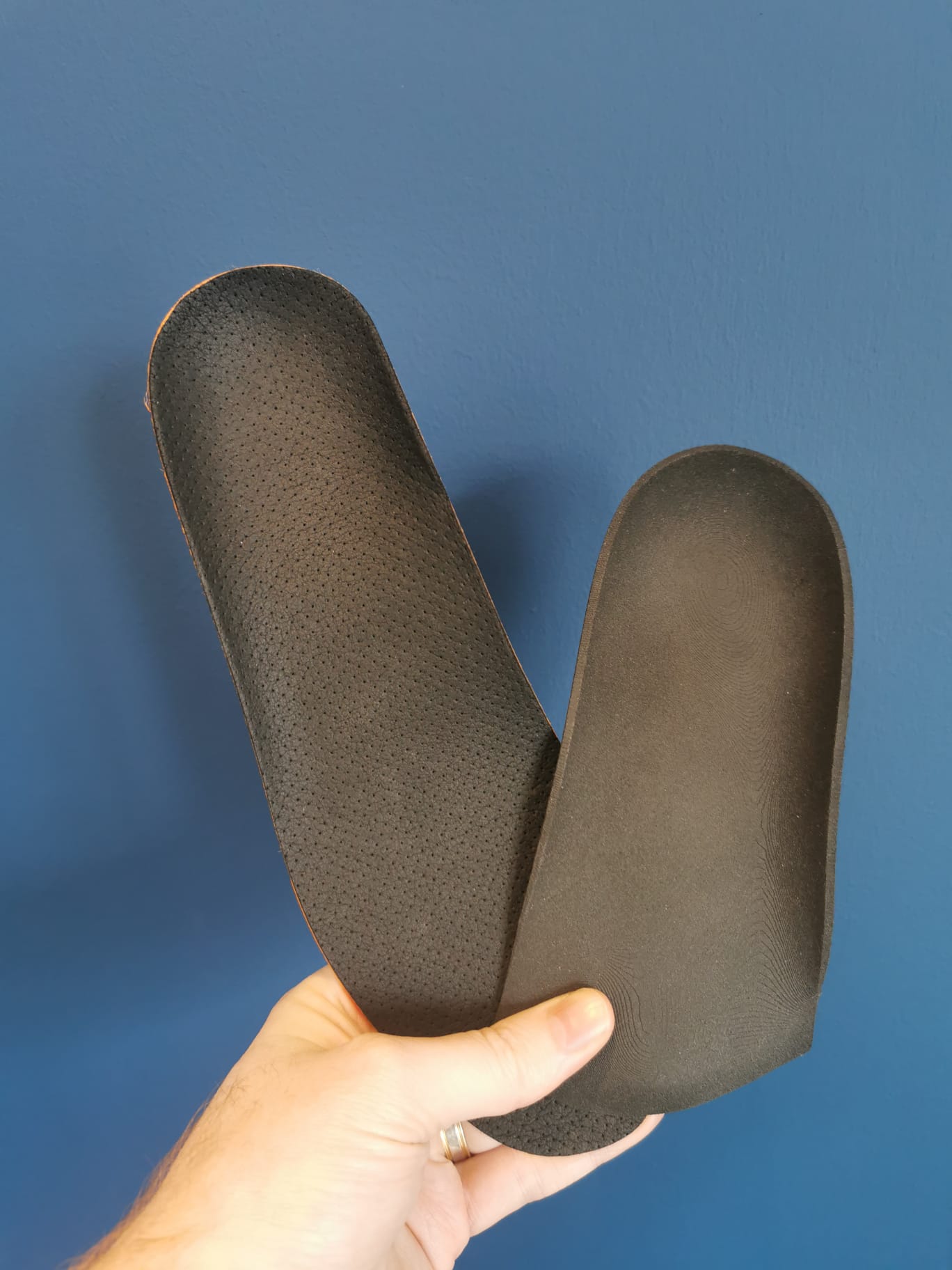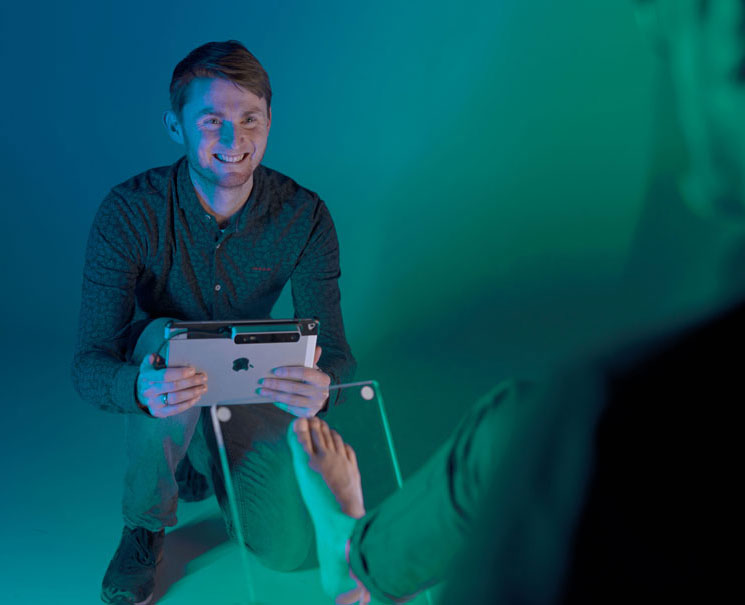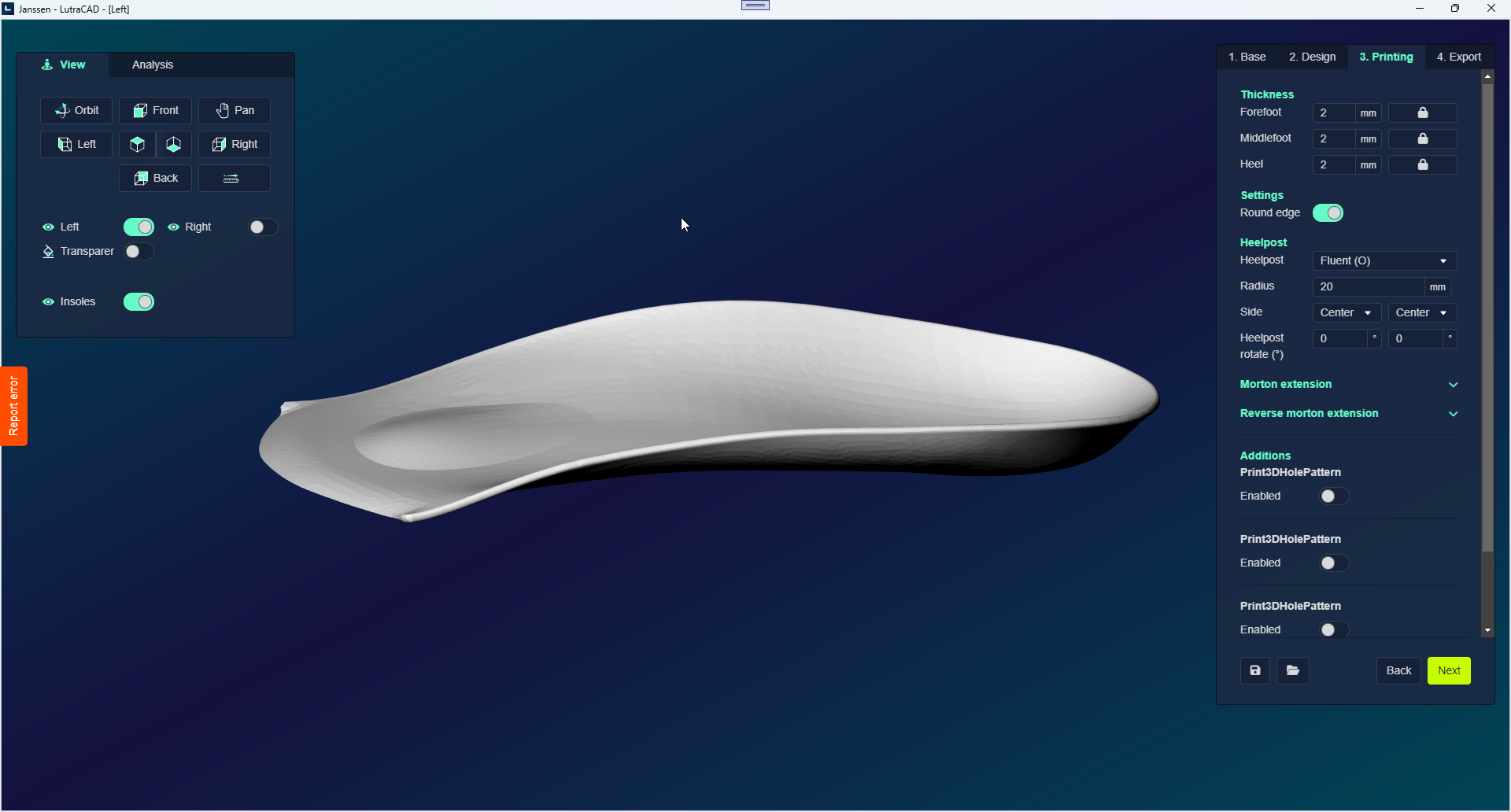What is a Foot Orthosis?
A foot orthosis, often simply called an orthotic, is a device designed to support, align, prevent, or correct the function of the foot. Imagine it as a personalized insole that fits into your shoes, providing relief and comfort while you walk, run, or stand. It's like having a custom cushion or support system tailored just for your feet, helping to distribute pressure more evenly and improve your overall foot posture.
 FO left and FFO right
FO left and FFO right
What's the Difference Between Functional and Accommodative Orthotics?
The main difference lies in their purpose and construction:
- Functional Foot Orthotics (FFO): Functional orthotics, often synonymous with rigid orthotics. Are designed to control abnormal motion and to treat foot pain caused by it. They're often made of a semi-rigid (shells) material like polypropylene, copolymer or carbon graphite. Think of them as the firm support that corrects the way your foot moves, often used by people who are active and need that extra support to prevent pain and injury.
- (Accommodative) Foot Orthotics (FO): These are softer and meant to provide cushioning and support, helping to relieve discomfort from conditions like diabetic foot ulcers or arthritic feet. They're more about comfort than correction, providing a soft landing for your feet and helping to distribute pressure away from painful areas. Accommodative foot orthotics often use EVA (Ethylene-Vinyl Acetate) for milling due to its cushioning properties, while TPU (Thermoplastic Polyurethane) is preferred for 3D printing for its durability and flexibility.
Foot Orthosis design software
The creation of FFOs and FOs is highly personalized. It begins with a detailed assessment of the individual's foot structure, gait, and specific needs by a healthcare professional. This assessment may include physical examinations, gait analysis, and digital scans of the feet. Based on this information, the orthotic is designed to address the individual's unique foot biomechanics.
Stage 1: Scanning
The first step in designing orthotics is capturing an accurate representation of the foot. This is typically done through 3D scanning, which provides a detailed digital model of the foot's shape, contours, and specific conditions. This technology ensures precision and customization, laying the foundation for a perfectly tailored orthotic device. Compare the best scanner for you.
 Scanning with LutraCAD iPad app and Structure Sensor
Scanning with LutraCAD iPad app and Structure Sensor
Stage 2: Designing and Template Selection
With the digital foot model ready, the next step involves designing the orthotic based on the individual's needs and selecting the appropriate templates. This stage is crucial for determining the structure, support, and corrective features of the orthotic. View our Foot Orthotic design software.
- For Shell Orthotics (FFO): Design options include adding heelposts for increased heel support, extrinsic posting to correct medial (inside) or lateral (outside) foot imbalances, and custom hole patterns for breathability. Additionally, personal touches like logos can be incorporated for branding or identification purposes. And many more options...
- For Accommodative Orthotics (FO): The design process allows for the selection of bottom templates tailored to the wearer's shoe and needs. It also includes options for multi-density insoles, where different areas of the footbed can have varying levels of softness or support, catering to specific pressure points or sensitive areas.
 Designing an FO
Designing an FO
 Designing an FFO
Designing an FFO
Stage 3: Production Method - Milling and 3D Printing
For manufacturing, two advanced techniques are often used: milling and 3D printing. Milling involves carving the orthotic out of a solid block of material, typically used for EVA-based accommodative orthotics or polypropylene for functional orthotics. This process allows for precise control over the shape and density of the orthotic, ensuring a perfect fit and targeted support.
3D printing, on the other hand, builds the orthotic layer by layer from a digital model. It's especially useful for creating complex geometries or incorporating varying material densities in a single orthotic, as is often the case with TPU-based functional orthotics. This method not only allows for highly personalized orthotics but also reduces material waste, making it a more sustainable option.
Both milling and 3D printing have transformed the way orthotics are made, providing individuals with more accurate, comfortable, and effective solutions for their foot care needs. Read more about different production methods.
Curious about 3D printing orthotics?
- How to 3D-print insoles?
- Best tips for FDM printing polypropylene insoles
- The Future of Shell Insoles: Embracing SLS Printing
Other Foot Orthosis
In addition to the basic functional and accommodative orthotics, there are specialized orthotic devices designed for more specific needs. These include:
- UCBL (University of California Biomechanics Laboratory) Heel Cups: These are contoured orthotics designed to stabilize the heel and correct foot posture. They're particularly effective for children with flatfoot or other developmental foot issues, providing a snug fit around the heel and arch of the foot.
- SMO (Supramalleolar Orthosis): These orthotics extend just above the ankle, providing support to both the foot and the lower leg. They're often used to help with stability and alignment for those with muscle weakness, low muscle tone, or coordination issues.
- AFO (Ankle-Foot Orthosis): AFOs are braces, usually made of plastic, that support the ankle and foot area. They're used to control position and motion, assist with weakness, or correct deformities. AFOs are commonly prescribed for conditions like stroke, cerebral palsy, or severe foot drop, helping to improve walking and stability.
Each of these products is tailored to address specific conditions and needs, offering solutions that range from mild support to substantial corrective assistance. By understanding the function and application of these various orthotic devices, individuals can better navigate their options and find the best solution for their particular situation.





